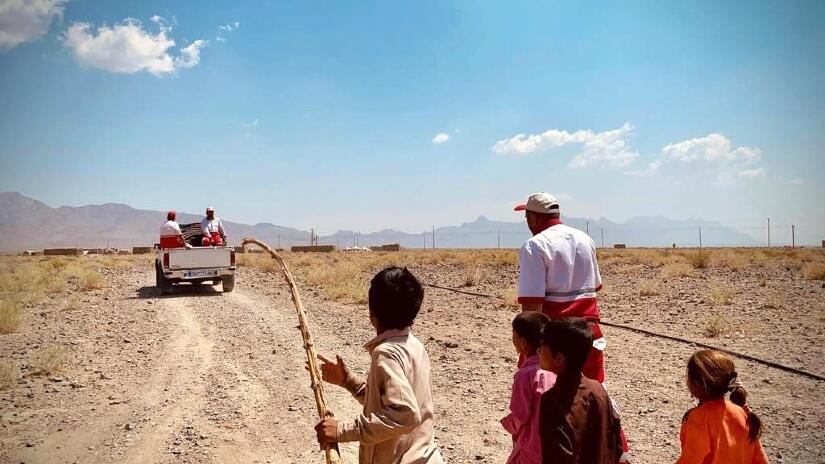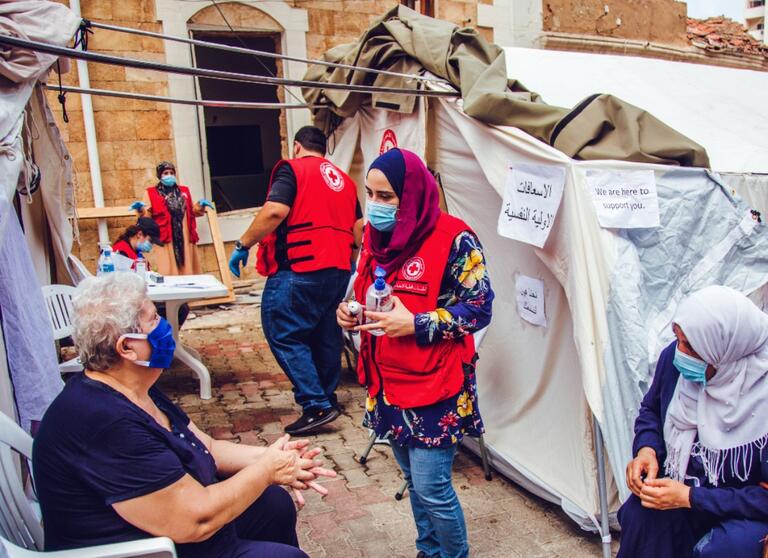16 June 2022, Beirut - The Middle East and North Africa (MENA) region continues to face multiple and complex crises from conflicts to climate change and displacement. The International Federation of the Red Cross and Red Crescent Societies (IFRC) today issued a rapid assessment report focusing on the impact of the conflict in Ukraine on the humanitarian situation in the MENA region.
The findings of the assessment confirmed that the conflict intensifies the impact of pre-existing crises and trends and increases the vulnerability of most countries.
Rania Ahmed, Deputy Regional Director of IFRC MENA said: “The global economic and security impact of the conflict in Ukraine could be the proverbial last straw that breaks the camel’s back, pushing already fragile countries in the MENA region over the tipping point.”
The assessment’s main findings show that food security and livelihoods are the two most affected sectors. Currently, there are over 55 million people across the region who need humanitarian assistance. Data show that the number could increase by 25% over the next six months because of the global food price index increase that has hit a record high. Twelve countries from the MENA region have experienced a dramatic increase in the price of basic food items. In Lebanon, prices have increased by 75-100%. In Iran and Yemen prices went up by 50-75%. Currently, five million people are facing food insecurity in the region. An estimated 1.9 million could slide into hunger.
MENA countries source up to 85% of their wheat from Ukraine and Russia. The agriculture industry in the region has already been severely affected by a combination of disrupted supply chains, water scarcity, and increasing temperatures.
With donors’ attention turned towards the Ukraine crisis, there is a risk that the humanitarian funding for MENA countries might drop. Lack of access to donor funding will only amplify the existing humanitarian crisis in several MENA countries. For the millions of Palestinians, Lebanese, Yemenis, Syrians, and others who live in countries experiencing conflict, catastrophic economic meltdowns, and increasing humanitarian needs, this would be equivalent to shutting down critical life support.
Finally, energy and oil-importing countries are experiencing additional social stress as they witness a 25-75% increase of fuel prices. In Syria and Yemen, fuel shortages and a lack of electricity is already severely impacting the delivery of basic services. The compounded crisis trends in Lebanon, including the sharp increase in energy prices resulting from the Ukraine crisis, have the potential to push the country over the tipping point to become a “critical crisis”.
Click here to access the full report.
Notes to the editor:
Methodology: This rapid assessment aims to contribute to the ongoing analysis and scenario development to anticipate, prepare for, and respond to evolving crisis trends in the MENA region, with specific considerations on how the Ukraine conflict is a risk multiplier to existing crisis trends. The assessment was carried out between 25 April and 3 June 2022 using secondary data and a perception survey of 24 representatives of National Societies and IFRC Heads of Delegation.
For more information:
Rania Ahmed, Deputy Regional Director, IFRC MENA: [email protected] +96171802701






